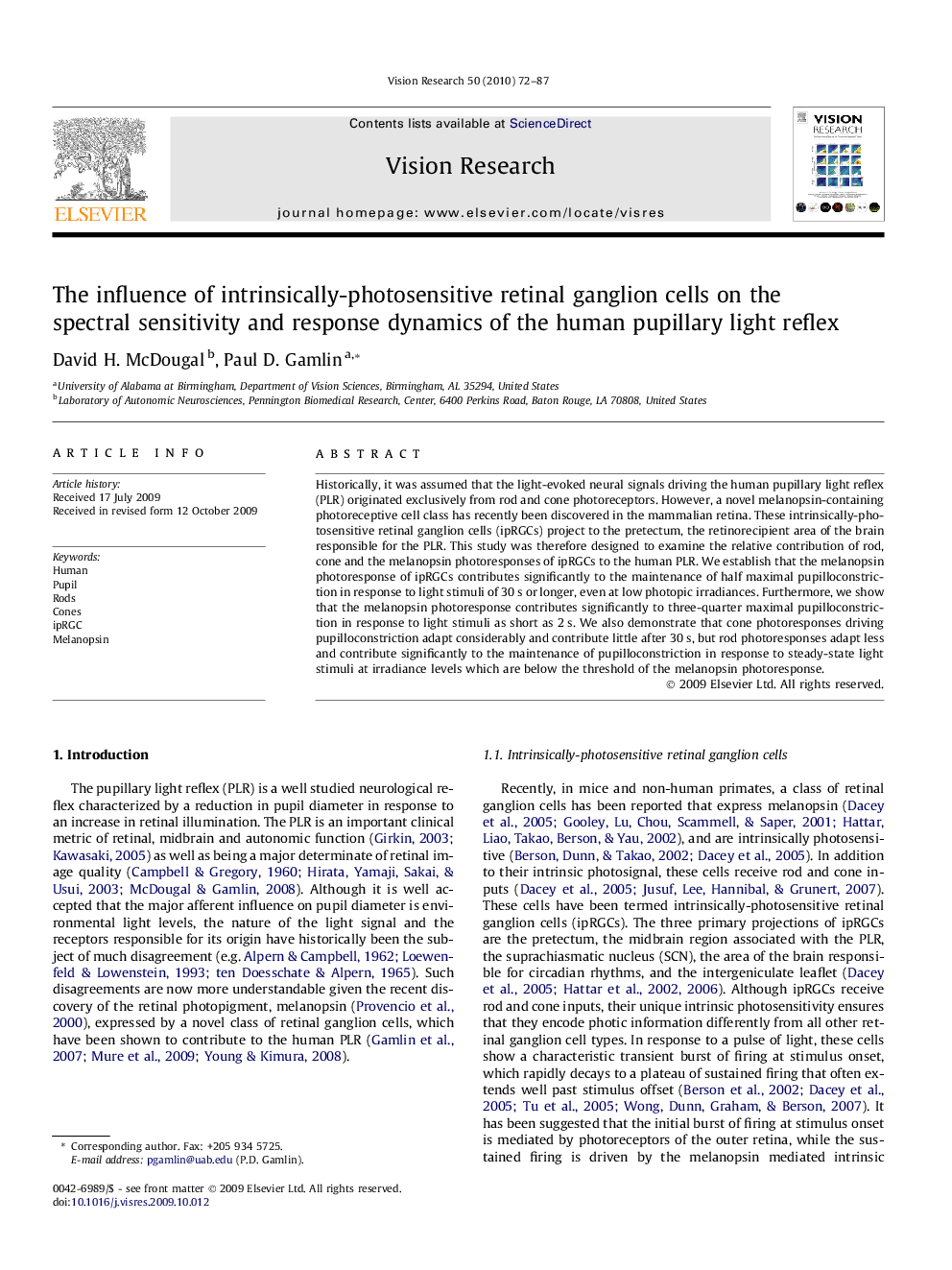| Article ID | Journal | Published Year | Pages | File Type |
|---|---|---|---|---|
| 4034591 | Vision Research | 2010 | 16 Pages |
Historically, it was assumed that the light-evoked neural signals driving the human pupillary light reflex (PLR) originated exclusively from rod and cone photoreceptors. However, a novel melanopsin-containing photoreceptive cell class has recently been discovered in the mammalian retina. These intrinsically-photosensitive retinal ganglion cells (ipRGCs) project to the pretectum, the retinorecipient area of the brain responsible for the PLR. This study was therefore designed to examine the relative contribution of rod, cone and the melanopsin photoresponses of ipRGCs to the human PLR. We establish that the melanopsin photoresponse of ipRGCs contributes significantly to the maintenance of half maximal pupilloconstriction in response to light stimuli of 30 s or longer, even at low photopic irradiances. Furthermore, we show that the melanopsin photoresponse contributes significantly to three-quarter maximal pupilloconstriction in response to light stimuli as short as 2 s. We also demonstrate that cone photoresponses driving pupilloconstriction adapt considerably and contribute little after 30 s, but rod photoresponses adapt less and contribute significantly to the maintenance of pupilloconstriction in response to steady-state light stimuli at irradiance levels which are below the threshold of the melanopsin photoresponse.
